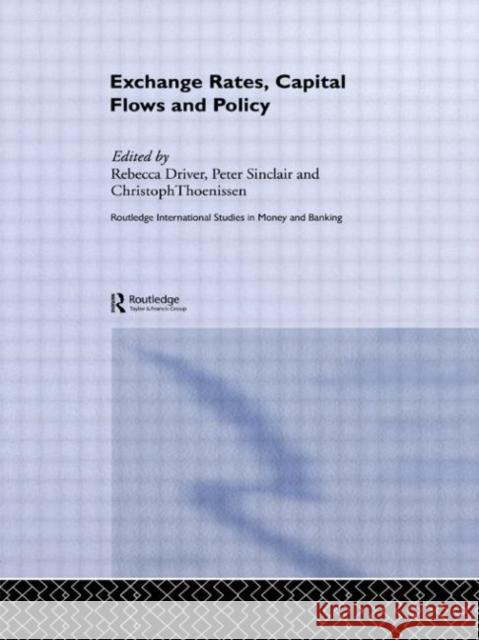Exchange Rates, Capital Flows and Policy » książka
Exchange Rates, Capital Flows and Policy
ISBN-13: 9780415352635 / Angielski / Twarda / 2004 / 425 str.
Exchange Rates, Capital Flows and Policy
ISBN-13: 9780415352635 / Angielski / Twarda / 2004 / 425 str.
(netto: 718,58 VAT: 5%)
Najniższa cena z 30 dni: 730,42
ok. 22 dni roboczych.
Darmowa dostawa!
As globalization progresses, exchange rates have become increasingly wedded to internal and external economic policies. This edited collection tackles four key questions in this important and growing area: How much emphasis should be placed on the exchange rate when setting policy? *What is the success or otherwise, of different approaches to modeling exchange rates? *What determines capital flows and their impact? *What should policy makers do about monetary policy and capital flows? It is well understood that within open economies the choice of exchange rate, capital mobility and monetary policies cannot be fully independent. Given the strong connections between the themes in this volume, it is no surprise that many of the chapters address multiple and interlocking ideas. Several contributions consider the links between exchange rate policy and monetary policy, including the costs and benefits of fixing the exchange rate. The factors that determine exchange rate movements and their impact is discussed in several of the essays, as are capital mobility, external assets and their policy implications. implications for portfolio choices and capital flows, is also a key area of exploration. Combining thorough scholarship with illuminating real-world examples, the contributors and editors have produced a volume of use to academics and economists. This volume provides insights on the causes and consequences of movements in both exchange rates and external assets and has a strong focus on the policy implications of operating in an open economy, particularly the choice of exchange rate and monetary policy, exchange rate intervention and policies on capital mobility.











